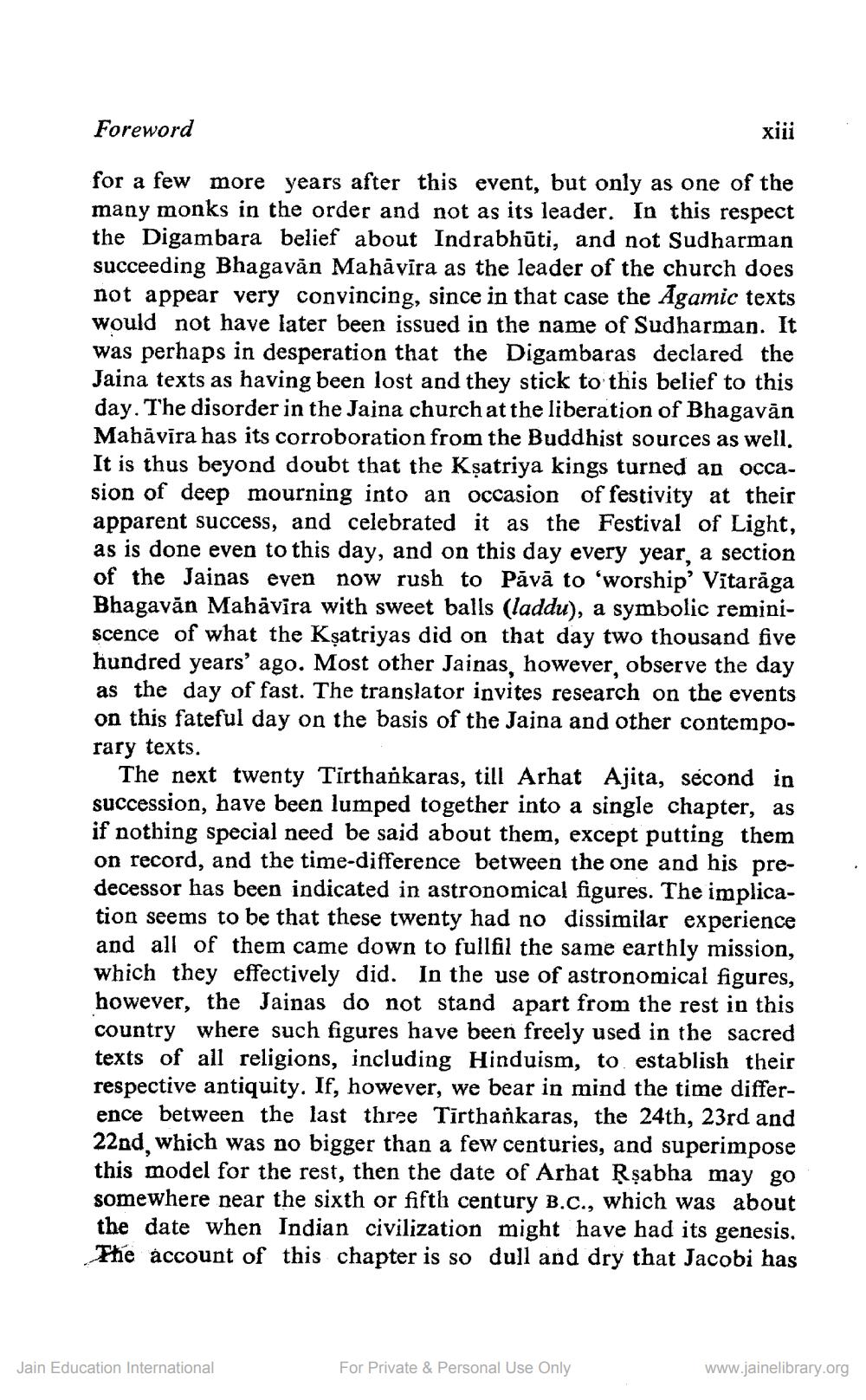________________
Foreword
xiii
for a few more years after this event, but only as one of the many monks in the order and not as its leader. In this respect the Digambara belief about Indrabhūti, and not Sudharman succeeding Bhagavān Mahāvīra as the leader of the church does not appear very convincing, since in that case the Agamic texts would not have later been issued in the name of Sudharman. It was perhaps in desperation that the Digambaras declared the Jaina texts as having been lost and they stick to this belief to this day. The disorder in the Jaina church at the liberation of Bhagavān Mahāvīra has its corroboration from the Buddhist sources as well. It is thus beyond doubt that the Kșatriya kings turned an occa. sion of deep mourning into an occasion of festivity at their apparent success, and celebrated it as the Festival of Light, as is done even to this day, and on this day every year, a section of the Jainas even now rush to Pāvā to 'worship’ Vitarăga Bhagavān Mahavira with sweet balls (laddu), a symbolic reminiscence of what the Kșatriyas did on that day two thousand five hundred years ago. Most other Jainas, however, observe the day as the day of fast. The translator invites research on the events on this fateful day on the basis of the Jajna and other contemporary texts.
The next twenty Tirthankaras, till Arhat Ajita, second in succession, have been lumped together into a single chapter, as if nothing special need be said about them, except putting them on record, and the time-difference between the one and his predecessor has been indicated in astronomical figures. The implication seems to be that these twenty had no dissimilar experience and all of them came down to fullfil the same earthly mission, which they effectively did. In the use of astronomical figures, however, the Jainas do not stand apart from the rest in this country where such figures have been freely used in the sacred texts of all religions, including Hinduism, to establis respective antiquity. If, however, we bear in mind the time difference between the last three Tīrthankaras, the 24th, 23rd and 22nd which was no bigger than a few centuries, and superimpose this model for the rest, then the date of Arhat Rşabha may go somewhere near the sixth or fifth century B.C., which was about the date when Indian civilization might have had its genesis. The account of this chapter is so dull and dry that Jacobi has
Jain Education International
For Private & Personal Use Only
www.jainelibrary.org




